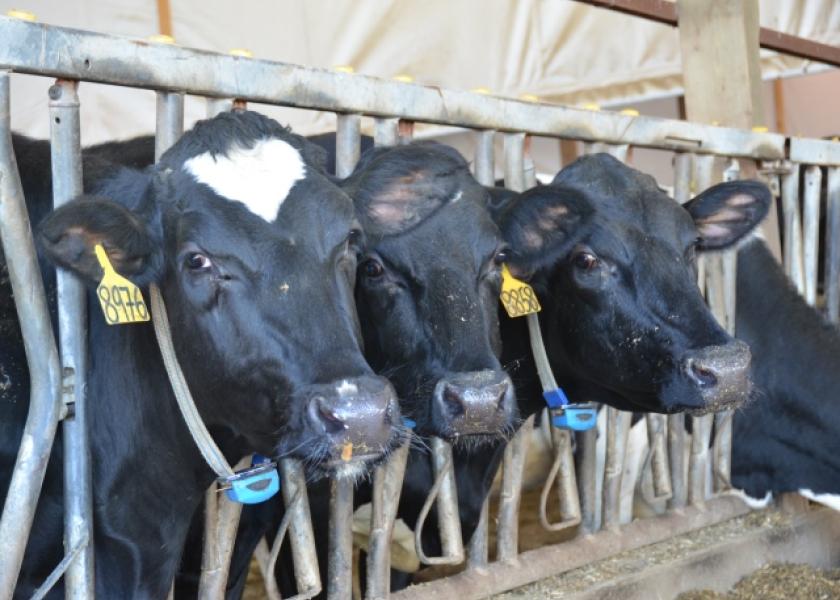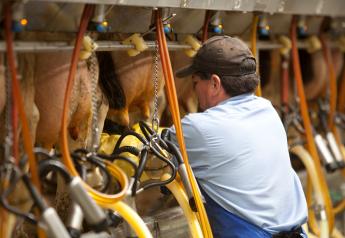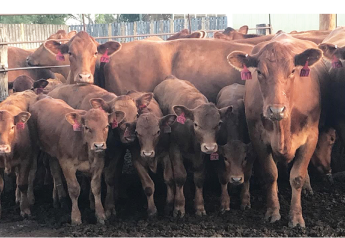New Option for Vaccinating Against Pneumonia Caused by M. Haemolytica

Study demonstrated no significant milk drop following vaccination.
Pneumonia has always been a concern for dairy producers and Mannheimia haemolytica (M. haemolytica, formerly called Pasteurella haemolytica) is the most common cause of bacterial pneumonia in cattle.1 Exposure to respiratory viruses, coupled with reduced immunity caused by overcrowding, new herd additions, transportation, ventilation insufficiencies and sudden weather changes are factors that increase the risk of this type of pneumonia. Because these opportunistic bacteria can become deadly respiratory pathogens, more and more producers are vaccinating against this potentially devastating disease.
"Frequently, if an M. haemolytica vaccine is utilized in an adult dairy herd respiratory protocol, it is often placed in the dry period due to fear of milk loss if given during lactation," says Dr. Brian Miller, Professional Services Veterinarian with Boehringer Ingelheim Vetmedica Inc. "However, incorporation in the dry period can be problematic due to the number of gram-negative vaccines already in place during this timeframe and concerns with endotoxin stacking (i.e., more than two gram-negative vaccines given at one time) causing a potential for anaphylaxis and abortion."
Avoiding this concern involves catching animals again during the dry period, which is inconvenient for many producers. If an M. haemolytica vaccine could be incorporated during lactation and result in minimal milk loss, vaccine compliance and added herd respiratory protection could both be achieved.
Study evaluated milk production following vaccination
To address the concern of milk loss, a recent study was conducted at Iowa State University. The study compared milk production changes in adult Holstein cows vaccinated post-calving with a five-way modified-live virus (MLV) vaccine containing an M. haemolytica toxoid (Pyramid® 5 Presponse® SQ) versus a five-way MLV vaccine containing a five-way Leptospira bacterin (Pyramid® 10). In this study, designed to determine maximal milk loss, the viral components – BVD Types 1 and 2, BRSV, IBR and PI3 – contained in both vaccines were the same viral strains and contained the same adjuvant. The difference was that one vaccine contained a five-way Leptospira bacterin and the other an M. haemolytica toxoid.
A total of 105 Holstein cows between 21 and 31 days-in-milk were vaccinated. The table below summarizes the study results:
*Three days post-vaccination compared to three days pre-vaccination.
**Not statistically significant.
For detailed study results, the peer-reviewed article can be found in Volume 8, Number 2 of The Bovine Practitioner (pages 139-142).
Another Vaccination Option
The results of this study indicate vaccination of adult dairy cows with PYRAMID 5 PRESPONSE SQ during lactation may cause a small, non-significant decrease in milk production compared to prevaccination milk levels. For farms experiencing elevated rates of pneumonia in adult dairy cows caused by M. haemolytica, these findings provide another vaccination option for consideration by veterinarians and dairymen to reduce the impact of this potential deadly respiratory pathogen.
For more information on PYRAMID 5 PRESPONSE SQ, talk to your veterinarian or Boehringer Ingelheim Vetmedica, Inc. representative.
Source: Boehringer Ingelheim Vetmedica, Inc.
1 The Merck Veterinary Manual. Bacterial pneumonia in cattle. Accessed January 11, 2015.








